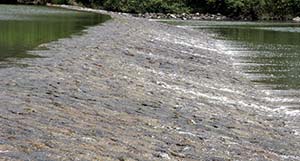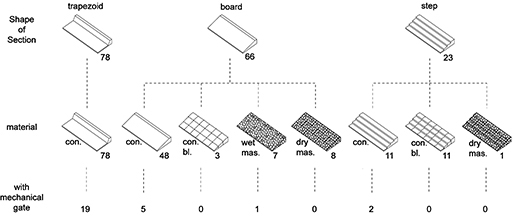japanese
Characteristics of forms as landscape elements
-


from left, Daiju-zeki, Kawanohara-seki
Weirs are one of the landscape elements which tell us about the long history of regional lives with the rivers in Japan. In this research, 167 examples of such historical weirs are investigated in order to clarify how their original forms have been transformed through modernization. Almost half of them have been altered to the trapezoid sections in cast-in-concrete equipped with mechanical gates, and only the angles of their bodies to the river courses have remained as the elements inheriting their original forms. On the other hand, there are few weirs inheriting the traditional forms by shape of section, material, and flushing gate operated by man. It is important to clarify the factors in which the historical weirs have remained without designation as the cultural assets and to explore the methods of preservation and succession of them.


Seki at Anari, succession of construction method and transition of material: wood frame to steel tube frame, stone filling to concrete block filling
-
more information
Murakami, S. (2012) : Study on Forms of Historical Weirs in Japan as Landscape Elements:Archi-Cultural Translations through the Silk Road: 2nd International Conference, Mukogawa Women's University, Nishinomiya, Japan, July 14-16, 2012, Selected Papers:131-137









